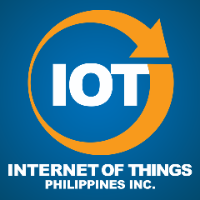
One of the most well-known biometrics is fingerprint recognition. Fingerprints have been used for authentication due to their uniqueness and accuracy over time. Still, the technology is continuously advancing with the introduction of touchless fingerprints (i.e., biometrics in the Philippines) due to advances in computational capabilities.

What is a Fingerprint Reader in the Philippines?
Biometric identification technology is being more widely used in surveillance, with fingerprint recognition (biometric fingerprint) becoming the most widely used biometric technology for physical access control at the moment.
Fingerprint readers are a more accurate authenticator of identity than a standard pin, and similar password methods, and can guard against fraud and identity theft.
How Does a Fingerprint Reader Work?
Fingerprint scanners can use different tools to capture the unique characteristics of the prints. Optical scanners, which use lenses to reflect light onto complementary metal-oxide-semiconductor (CMOS) sensors, translating light into electronic signals, are the most common fingerprint readers.
The scanner often demands several prints from the same finger to create a more comprehensive and precise representation of your fingerprints.
What are the three types of Fingerprints?
1. Loops
The most famous fingerprint pattern is this one. Indeed, this trend is seen in 60 to 70% of the population. There must be at least one center and delta in the loop pattern.
2. Whorls
Around 25 to 35% of the population has this fingerprint pattern. Whorls, unlike arch shapes, have a heart and two deltas. It only has two sub-categories, which are identical to the arch.
3. Arches
This is the most distinctive fingerprint form. This fingerprint pattern is seen in around 5% of the world’s population. It’s unique because it has no centers, lines, or deltas. Two other sub-categories arise from this pattern.
Where Can You Get Fingerprint Reader in the Philippines?
IOT Philippines Inc. is a progressive company that utilizes cutting-edge technology of the “Internet of Things” and a closely related field, Radio Frequency Identification (RFID), to transform how we live our daily lives. It will revolutionize every business, every government, every household, every educational system for the better.
















.png)
.png)








Leave Your Comment & Rating Below
0 Comment(s)